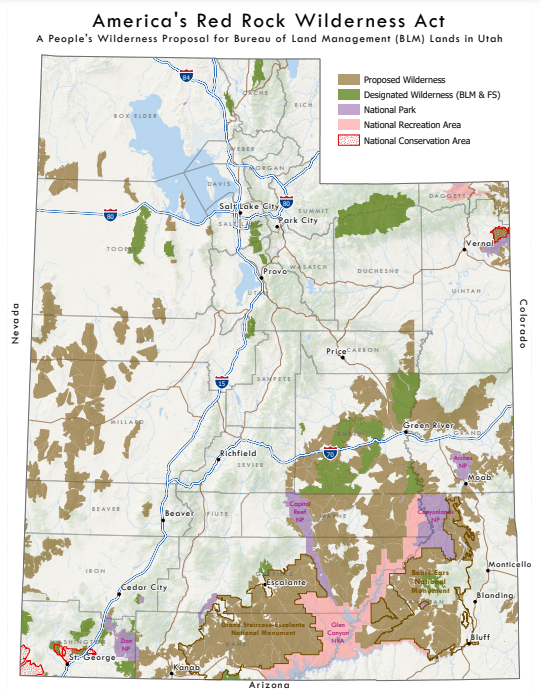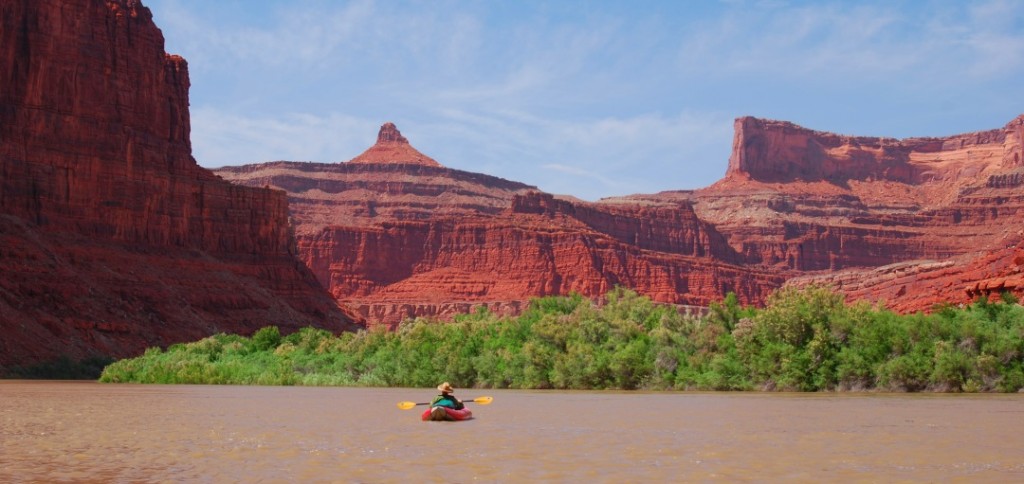
America’s Red Rock Wilderness Act would protect iconic western landscapes with evocative names like Labyrinth Canyon, Robbers Roost, and the Kaiparowits Plateau. These wild public lands comprise an important piece of the 30% of America’s lands and waters scientists say we must protect by the year 2030 in order to prevent catastrophic collapse of our natural systems. Centrally located in the Intermountain West, these lands are also a vital link in the interconnected chain of largely undisturbed ecosystems running from the Grand Canyon to Glacier National Park, providing important migration corridors for wildlife.
Peer-reviewed research shows that America’s Red Rock Wilderness Act can also play a role in mitigating climate change. Protecting these wild landscapes would keep a significant amount of fossil fuels in the ground, accounting for a meaningful amount of the carbon mitigation needed to limit global warming to 1.5 degrees Celsius. Additionally, scientists estimate that the lands proposed for protection currently sequester and store 247 million metric tons of organic carbon in plants and soils. Designating these lands as wilderness would help preserve flows in the Colorado River (the lifeblood of the arid Southwest) by preventing surface-disturbing activities that cause windborne dust to coat Colorado snowpack, melting it faster and earlier.

America’s Red Rock Wilderness Act has been introduced in the House of Representatives since 1989, first by Utah Rep. Wayne Owens, and subsequently by Rep. Maurice Hinchey of New York, Rep. Rush Holt of New Jersey, and Rep. Alan Lowenthal of California. In 1997, Senator Dick Durbin of Illinois agreed to introduce a Senate version of the bill and has done so every Congress since. Rep. Melanie Stansbury of New Mexico is the current House sponsor.
All lands proposed for wilderness designation in America’s Red Rock Wilderness Act are owned by the American public and administered by the Bureau of Land Management (BLM). The bill is supported by SUWA, Sierra Club, the Natural Resources Defense Council, the Wasatch Mountain Club, and more than 200 other national and regional conservation organizations belonging to the Utah Wilderness Coalition.
Watch and Learn More
Podcast:
Why the Red Rock Bill Matters
In this podcast episode we examine how America’s Red Rock Wilderness Act defines the turf of Utah’s wilderness debate—literally on the ground, as well as politically—and how the bill sets the standard against which other legislative and administrative actions are measured. Listen now!

